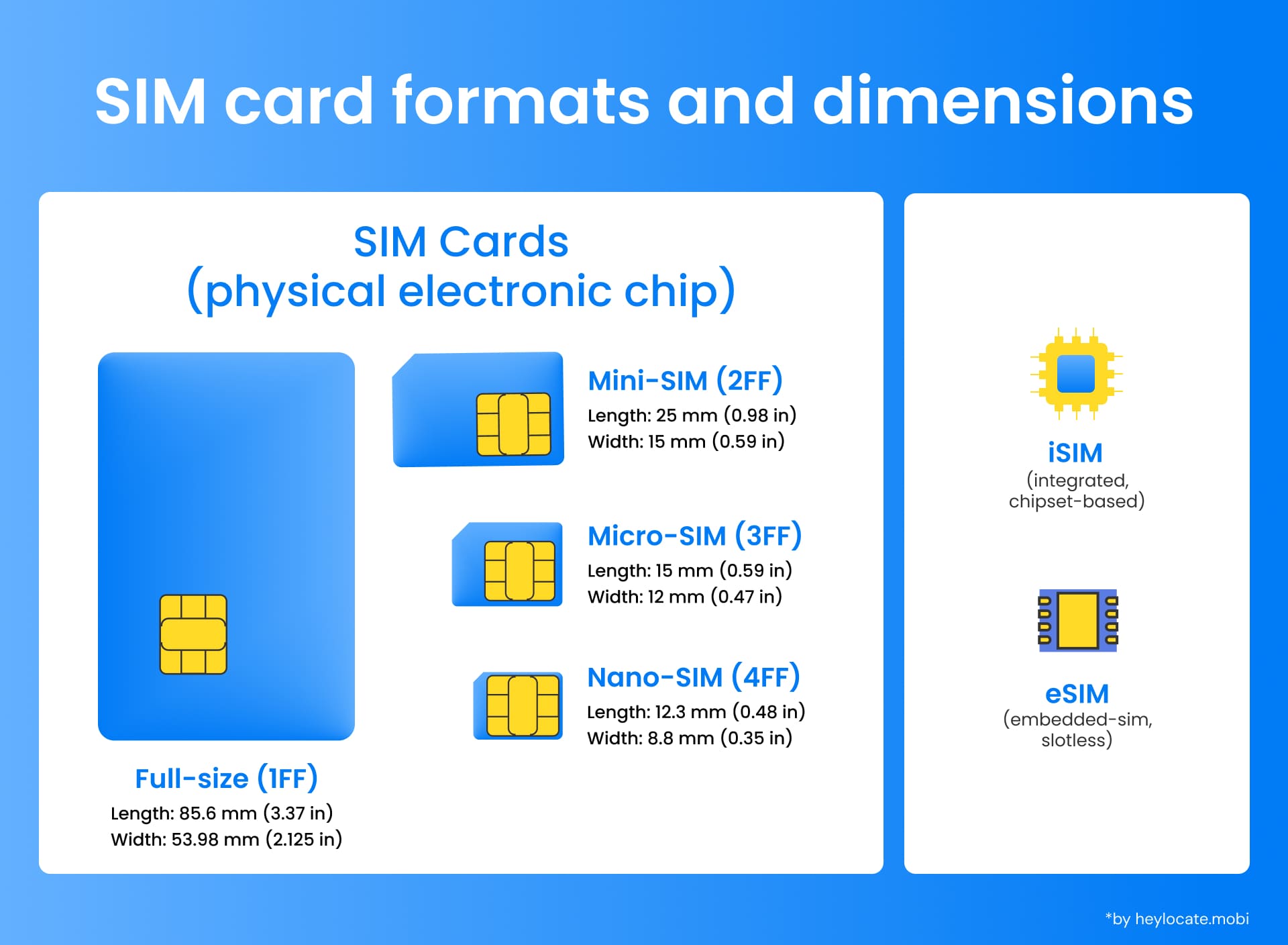Subscriber Identity Module (SIM) Card
What is SIM Card?
A SIM card, or Subscriber Identity Module, is a small electronic chip inserted into a mobile device to identify and authenticate the user on a cellular network. This crucial component enables mobile communications and connects users to various services their network operators provide. SIM cards are typically made of PVC (polyvinyl chloride) and contain embedded contacts and semiconductors that store vital information and enable communication between the device and the network.
Key Features and Functionalities
| IMSI number | A SIM card is assigned a unique identifier that allows network operators to authenticate users on their network. |
| ICCID | A unique SIM card serial number is used for inventory and tracking. |
| Security Authentication | Mechanisms like PIN, PUK, PIN2, and PUK2 codes ensure authorized access to the network. |
| Temporary Local Network Information | SIM cards temporarily store network information to seamlessly connect to local networks when users travel to different locations or countries. |
| User Services | SIM cards can store user-specific information such as phonebook contacts and text messages, as well as network features like call forwarding and voicemail. |
SIM Card Structure
SIM cards are designed with a specific physical layout, and they operate at defined voltages to ensure compatibility and functionality across various devices and networks. Typically, a SIM card has a plastic structure with embedded metallic contacts and a microchip.

Over the years, SIM card sizes have evolved to accommodate advancements in device design and miniaturization:
- Full-size cards: 85.6mm x 53.98mm x 0.76mm.
- Mini-SIM or standard SIM: 25mm x 15mm x 0.76mm.
- Micro-SIM: 15mm x 12mm x 0.76mm.
- Nano-SIM: 12.3mm x 8.8mm x 0.67mm.
Embedded and Integrated SIM Technologies
In addition to traditional physical SIM cards, advancements in SIM card technology have led to the development of embedded SIM (eSIM) and integrated SIM (iSIM) technologies.
- eSIMs are soldered or embedded directly into the device during the manufacturing process, eliminating the need for a physical SIM card slot and allowing for more compact device designs and greater flexibility for users to switch between network operators.
- iSIM refers to a SIM card integrated into the device’s chipset or processor, providing even more flexibility and control over SIM card functionality for device manufacturers.
Stored Information and Capacities
SIM cards store various types of information vital for network authentication, identification, and user services. The stored information includes:
- ICCID: The Integrated Circuit Card Identifier (ICCID) is a unique serial number that identifies the SIM card itself.
- IMSI: The International Mobile Subscriber Identity (IMSI) is a unique identifier assigned to each SIM card user.
- Network-Specific Information: SIM cards store temporary network information when a user travels to a different location or country.
- User-Specific Information: SIM cards can store user-specific data such as phonebook contacts, text messages, and network-specific features like call forwarding and voicemail.
Security Mechanisms and Vulnerabilities
- Authentication Key (Ki): Protects user information and prevents unauthorized access.
- Vulnerabilities: SIM cloning, SIM swapping, encryption key attacks. Manufacturers and network operators continuously work to improve security.
Varieties of SIM Card Formats
SIM cards have evolved over the years, resulting in different formats with varying physical dimensions. The different SIM card formats include:
- Full-size SIM (obsolete)
- Mini-SIM (standard)
- Micro-SIM
- Nano-SIM (current standard)
Backward compatibility is often maintained (using adapters).
Adaptations for Multi-SIM Devices
- Dual SIM devices: Allow two active SIM cards to manage multiple phone numbers or network operators.
- Thin SIMs: Ultra-thin adhesive cards that attach to existing SIM cards, enabling additional SIM functionality.
Impact on Mobile Communications
SIM cards play a critical role in connecting billions of devices to cellular networks worldwide, serving as the primary means of identification and authentication and enabling devices to access network services and communicate with other devices.
Future Developments and Trends
- Increased integration of SIM functionality into device chipsets (iSIM) for enhanced security and performance.
- Wider adoption of eSIMs and remote provisioning for managing network profiles.
- Evolution of SIM cards to offer advanced services beyond connectivity (secure digital ID, mobile payments).
- Potential disruption of the traditional SIM card market by eSIM and iSIM technologies.
References
- SIM card – Wikipedia
- What is a SIM card? A definition from WhatIs.com
- What Is a SIM Card and How Does It Work? | Built In
- What Is A Sim Card? | T-Mobile
- SIM Cards (Explained) – Thales
- What is a SIM Card? | Lifewire
- What is a SIM card? | Glossary | Vodafone UK